Access and Sevices |
On the Buses
In January 1947, Stanley Richard Latta commenced Route 64 with M/O 063, a 1928 model eight-seater American Stutz car. He thrashed the Stutz through the sand and swamps until August 1947 when he purchased a 1928 Rio, a 21-seater bus, from the Kogarah Bus Service. A later bus was a Bedford. These first vehicles were conventional rear-wheel drive.
Ruth Jacobs recollects: "Mr Cortese had a horse and cart from Cronulla before the Latta's bus. My father, Stanley Richard Latta, had the bus run. He was called Dickie Latta. There was a lot of controversy about bringing the bus through properties to Kurnell at first, but Dad started the motor bus. They put a gate across there where the oyster leases were at Weeney Bay.
"He used to drive the Stutz out here to Kurnell, pick people up, and take them in to Cronulla to the pictures on a Wednesday and a Saturday night. The Friday night bus was called the 'drunks bus' because it ran at closing time for the pub. Then he bought an old army blitz and they had to drive that out there when the tides were very high because they couldn't get the bus through. And if they did have the bus, they used to have to take the blitz truck too, to tow the bus through the high water. He also used the blitz to carry shellgrit. It was amazing what they did do! |
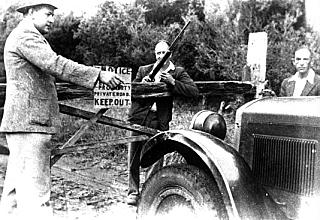 |
| "He kept a shovel behind the driver's seat and chains and planks in the bus. When the bus got stuck it was everybody out, shovel the sand and push the bus out. That was two or three times each trip on route 64. When they put the track through, dad carried the rocks in his truck over the sandhills and helped make the road so the bus could get through without getting bogged. The Kurnell fellas all got in and helped make that little track through the sandhills so that the bus could get through. It was all sand. |
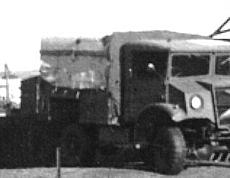 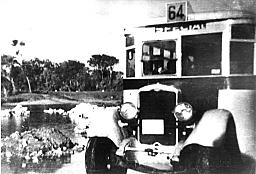 |
| "Well, they used to come down that hill and come around the Bay, and of course, when the big high tide came that part of the track used to be under water. And there was an old shack out there and an old chap hung himself in that. And I used to be terrified of going back by there; they used to say there was a ghost there. Dad passed away when he was about 52 or 53, so my brother Stan took it over." |
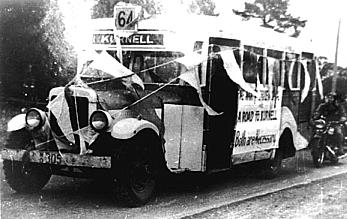 |
Negotiation and pleas for a substantial road to Kurnell went unheeded, so Stan decorated M/O 305 with flags and signs and drove it around in protest. Though Stan's push for the road fell on deaf ears, the prospect of success loomed from another quarter. Caltex was coming. |
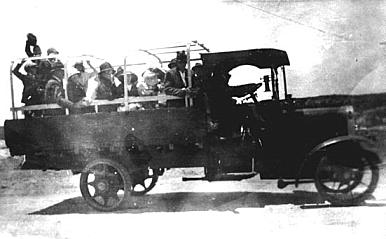
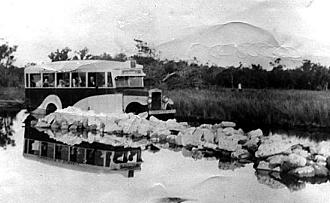 |
| Several years prior to the construction of the Caltex/Council road to Kurnell and for many years after, Spencer Lowe, proprietor of the Alexandria Bus Company, ran a tourist service to Kurnell. Aware that conventional rearwheel-drive vehicles were impractical in the Kurnell terrain, he had a purpose-built coach built on the chassis of a two and a half ton, 6 wheel-drive ex-army GMC cargo truck. It had a 36-horse power engine. He extended the wheelbase to 19 feet 9 inches, added double wheels to each of the two rear axles, fitted bar-tread tyres to all wheels and raised the ground clearance of the vehicle. The finished cream-coloured coach was 32 feet 9 inches long with a 40-seat passenger body. It negotiated the sand and swamp by engaging the 10-wheel-drive transmission. It was claimed to be the largest touring vehicle in NSW and required 4 steps to enter the dust-proofed seating area, upholstered with blue seats. A public address system, a shovel and mattock were available for emergencies. |
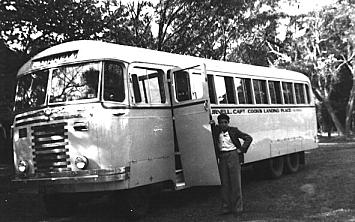 |
| top of page |



